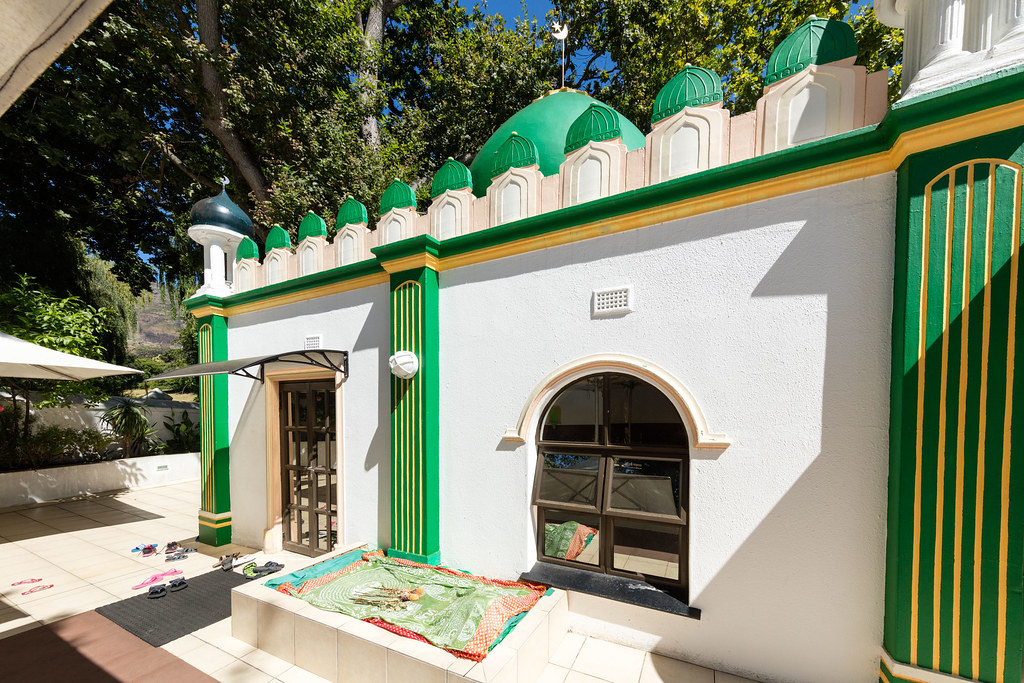By Anees Teladia
Following the historic decision to earmark key sites in Bo-Kaap as heritage, there are now plans afoot to achieve national heritage status for the religious and cultural sites known as kramats in the Western Cape. Six kramat sites have already been declared and there is a submission of 17 more sites currently pending to complete the famous “Circle of Tombs” in the Western Cape. The Cape Mazaar Society made the announcement on Thursday at an event which saw several stakeholders in attendance.
The chairperson of the Cape Mazaar Society, Mahmoud Limbada was joined by Sheikh Abdurahman Alexander and the chairperson of the Sunni Ulama Council of the Cape, Moulana Moegsien, in extending a warm welcome to all the guests at the kramat of Sheikh Abdurahman Matebe Shah in Constantia.
Limbada told VOC News that these kramats deserve to be national heritage sites for many significant reasons. He added that while these are religious and cultural sites for Muslims, they deserve the status of national heritage because they are, in fact, important for several other reasons which include our troubled political and cultural history.
Discussing our national history and the struggle for liberation during the time of colonialism and Apartheid, Limbada tied in the importance of kramats in this regard.
“We had people like Nelson Mandela and the ANC in the struggle. But we need to go further back and see that when this place was an area of political prisoners who fought for freedom in their own countries and against the oppressive colonialists, they [the people honoured with kramats] started the fight in their home countries. They were banished here.”
“They were freedom fighters and continued that fight here in South Africa. Sheikh Abdurahman Matebe Shah [honoured in a kramat in Constantia, Cape Town] was the first freedom fighter incarcerated on Robben Island. Nelson Mandela said that whenever he felt hopeless he used to visit the shrine of Sheikh Abdurahman Matebe Shah and that from those visits he used to get renewed hope and vigour to continue his struggle,” said Limbada.
The Circle of Tombs comprises the tombs of the Auliyah (friends of Allah) – resistance fighters whom the Dutch brought to the Cape as slaves and who had left a firm imprint, including the introduction of Islam, to this part of Africa. These tombs are known as kramats and among them is that of the founder of Islam in South Africa, Sheikh Yusuf of Macassar. He is buried on the hill in Faure and his tomb is open to all visitors regardless of religion.
According to legend, more than 250 years ago a prophecy was made that there would be a “Circle of Islam” around the Cape.
Vidamemoria Heritage Consultancy company’s representative, Yunus Samodien mentioned that they have been working on this project for 13 years and that they are relieved to finally see these milestones and results.
“The objective was to have all the kramats declared as heritage sites and to be protected. So, if all goes well Inshaa Allah, we will have them declared,” said Samodien.
“SAHRA (the South African Heritage Resource Agency) is handling the process and we are truly grateful that they have taken it forward. Islam is our culture. It’s our tradition and our lives. I’d like to say shukran for granting us this opportunity – this is a proud day for us.”
Heritage Officer under the built environment unit at SAHRA, Palmira De Almeida said that SAHRA recognises the importance of a project like this and will accordingly start the process as soon as possible.
“We recognise the significance and fully endorse the grading and declaration of the kramats. We look forward to meeting with the stakeholders and taking this process forward,” said De Almeida.
“I’ll be leading the process. We have gotten the dossiers so we will start the process as soon as possible.”
Vidamemoria Heritage Consultancy company’s other representative, Quahnita Samie added further insight into the process being followed as well as some background information on the project.
“We’ve been working on this for as long as we can remember…we are extremely excited and happy that this is going ahead,” said Samie.
“There’s a serial nomination of all the kramats that are contained in the Kramats of the Western Cape book. The circle of Islam has now been nominated and further sites will be added to that serial nomination as they are identified. One of the sites have already been declared – that’s the Tana Baru – and that was announced on Tuesday. As we go ahead with the public participation process, working with SAHRA, the other sites will be declared.”
“We are hoping that within the next coming months, all of them will have heritage status and that the respect and remembrance will be acknowledged. We are really excited we are at this point.”
Once these kramats are declared national heritage sites they will be protected by South Africa’s National Heritage Resources Act. This would ensure that given any instance of desecration, the guilty party(ies) could be criminally charged in accordance with the relevant heritage protection legislation.
VOC






 WhatsApp us
WhatsApp us 

